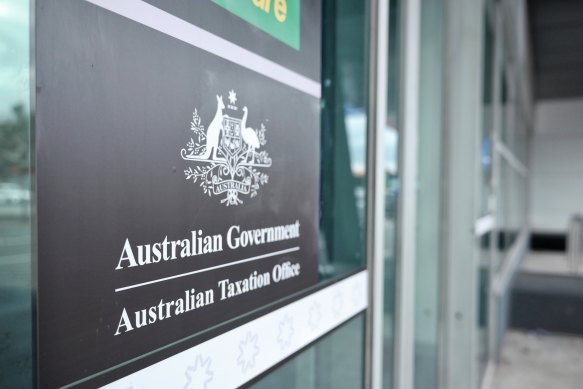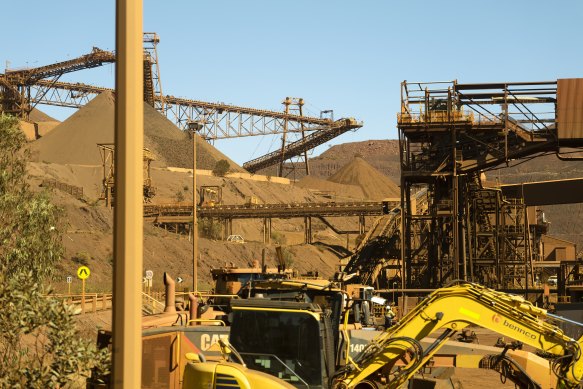Save articles for later
Add articles to your saved list and come back to them any time.
The Australian Tax Office has clawed back $6.4 billion from mining and fossil fuel giants in a record-setting crackdown on multinationals over the past year, with large settlements extracted from Rio Tinto and Ampol contributing to the revenue boost.
The windfall secured by the ATO’s tax avoidance taskforce is more than double the $3 billion average it has extracted from corporate heavyweights annually since the unit was established in 2016.
The ATO clawed back a record $6.4 billion in revenue from multinationals and large companies in the last financial year. Credit: Luis Enrique Ascui
The taskforce’s success in 2022-23 was underpinned by a mammoth settlement with Rio Tinto in July last year after a decade-long battle over its Singapore-based marketing hub. The nation’s top iron ore miner agreed to pay $1 billion in unpaid taxes in what the ATO Deputy Commissioner Rebecca Saint heralded as “one of the largest settlements in Australia’s tax history”.
Treasurer Jim Chalmers said the recovered revenue was a “big outcome” and would complement the government’s multinational tax package to address tax loopholes. A first tranche of legislation is currently before the Senate, which aims to increase transparency around the subsidiaries of multinationals and to limit debt deductions.
“This extra revenue benefits Australians by helping fund vital services like Medicare, aged care and childcare; support our ability to provide targeted cost of living relief to households; and service the trillion dollars of debt racked up by the former government,” Chalmers said.
Due to privacy obligations, the ATO is unable to legally disclose the companies it has extracted unpaid tax revenue from unless the settlement is a matter of public record. In addition to Rio Tinto, the government pointed to the $157 million settlement reached with Ampol in February over its tax filings dating back to 2014.
Chalmer’s office said that around $4.4 billion of last financial year’s haul was secured through the ATO’s long-running pursuit of the oil and gas sector, pointing to its triumph over Chevron in a landmark profit-shifting case in the Federal Court in 2017, which it said meant resource companies are paying more tax sooner.
Rio Tinto Tom Price mine site in the Pilbara Region of Western Australia.Credit:
The taskforce was given another $1 billion four-year funding injection in last year’s October budget, securing its operations until 2025.
Head of Deloitte Access Economics Pradeep Philip said dealing with leakages in the tax base would continue to be an ongoing issue for the federal government, but comprehensive tax reform was needed to address the bigger challenge of consistency in multinational tax rules across different countries.
“Cracking down on tax avoidance is always an important measure. But what would be even better for multinational corporations as they seek to invest and drive growth is more consistent basis of dealing with multinational taxation across different countries, which Australia is part of through OECD,” Philip said.
“There’s a lot of debate globally about this, and it’s important that Australia is part of that.”
The extra tax helped Chalmers and Finance Minister Katy Gallagher deliver the first budget surplus since 2007-08.
The $22.1 billion surplus for the 2022-23 financial year, the largest in dollar terms since the creation of the Commonwealth, had originally been forecast to be a $77.9 billion deficit. But extra revenue from the corporate sector helped convert it into a surplus.
There are, however, early signs the surge in company tax may be coming to an end.
Budget figures covering the first two months of the 2023-24 financial year show the budget bottom line ahead of the forecast $13.9 billion deficit by $4.4 billion. The improvement is almost all due to higher-than-expected income tax collections from working Australians. Company tax collections, however, are $400 million behind expectations.
Cut through the noise of federal politics with news, views and expert analysis. Subscribers can sign up to our weekly Inside Politics newsletter.
Most Viewed in Politics
From our partners
Source: Read Full Article




